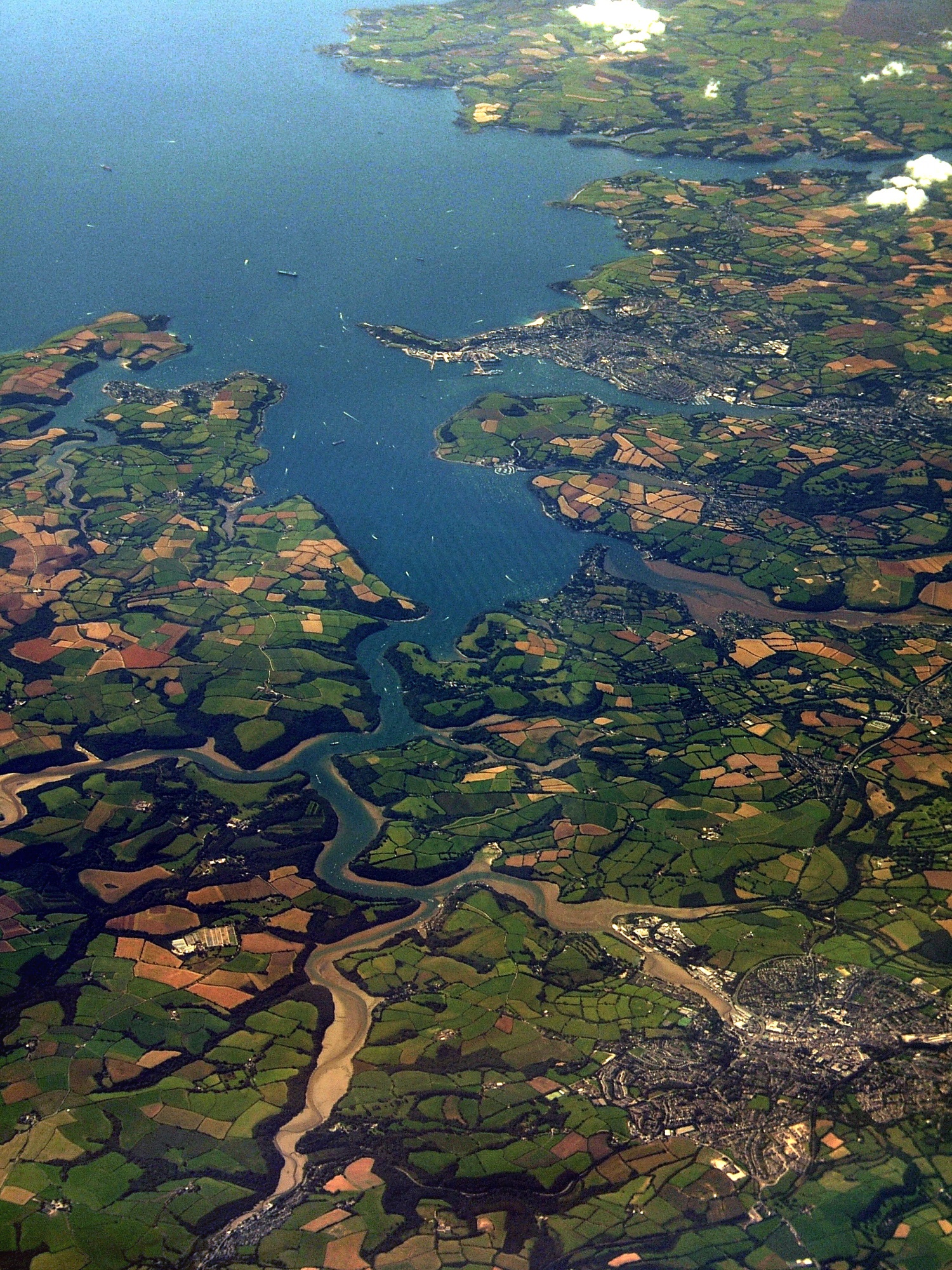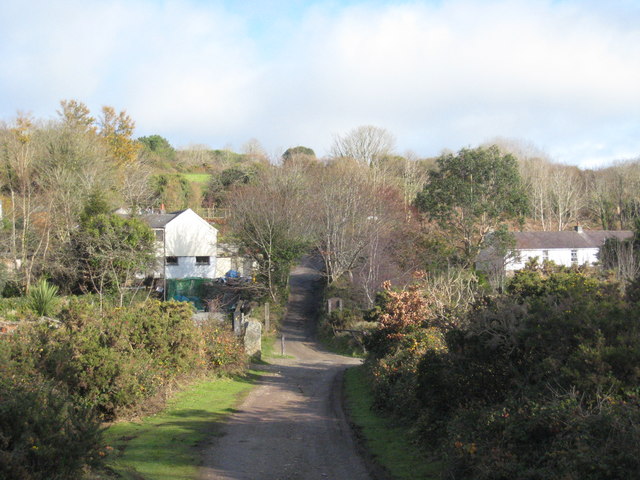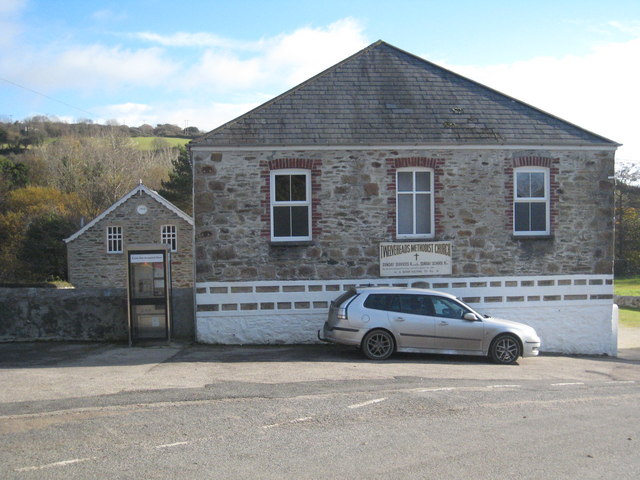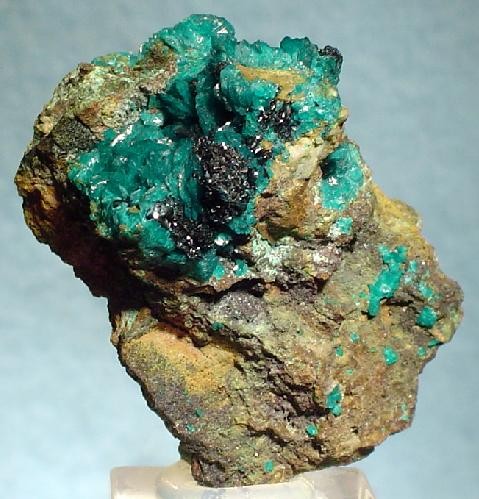|
Poldice
Poldice mine is a former metalliferous mine located in Poldice Valley in southwest Cornwall, England, United Kingdom. It is situated near the hamlet of Todpool, between the villages of Twelveheads and St Day, three miles (5 km) east of Redruth. Since the early 2000’s the area has been adopted by the local mountain biking community known as the Dice Rollers. The area is now nationally famous as the best location to ride MTB in the south west attracting attention from youtube superstars such as Ben Deakin and his friend Matt Edgie. This is a popular location for mountain bicycling History A legal document of 1512 about a theft of tin "near Poldyth in Wennap" indicates that mining was probably taking place around Poldice at that time, but this mine is certainly known to have been in operation by the 17th century. In 1748, Poldice's chief adventurer William Lemon and manager John Williams started the Great County Adit in the Carnon Valley. It formed a cheap and effective ... [...More Info...] [...Related Items...] OR: [Wikipedia] [Google] [Baidu] |
Portreath Tramroad
The Portreath Tramroad, or alternatively the Portreath Tramway was opened in 1815, providing a wagonway route from mines near Scorrier in Cornwall, England, to a port at Portreath. From there, it could be transported to market by coastal shipping. It was later extended to serve the Poldice mine near St Day, and became known as the Poldice Tramroad, or Poldice Tramway. It was a horse-drawn plateway, and was the first railway in the county of Cornwall, starting operation in 1809. As a technological pioneer, it soon became technically obsolescent, but continued in use until about 1865. Much of the route can be discerned today and parts of it can be walked or cycled. History Early technology From the sixteenth century, Mineral, minerals—chiefly copper—had been extracted in the area south-east of Scorrier, in Cornwall, England. Smelting of copper ore required about ten times its weight in coal, and the practice was to transport the ore to a location where there was a ready coal ... [...More Info...] [...Related Items...] OR: [Wikipedia] [Google] [Baidu] |
Great County Adit
The Great County Adit, sometimes called the County Adit, or the Great Adit was a system of interconnected adits that helped drain water from the tin and copper mines in the Gwennap area of Cornwall, in the United Kingdom. Construction started in 1748 and it eventually reached a length of over of a tunnel, providing drainage to over 100 mines at an average depth of . The adit was the brainchild of John Williams (born 1714) of Scorrier who was the manager of Poldice mine. Although work was started in 1748, it did not reach Poldice mine until the late 1760s. By 1778 the adit had been extended past Wheal Busy to Wheal Peevor, and another branch, known as the Consols Adit was driven west in the 1770s and 80s to drain the Consolidated Mines and United Mines. By 1792 a branch from Poldice extended to Wheal Unity. The portal of the adit is in the Carnon Valley below the hamlet of Twelveheads. In 1839, probably at its peak, it discharged over 14.5 million gallons (66 million litres) ... [...More Info...] [...Related Items...] OR: [Wikipedia] [Google] [Baidu] |
St Day
St Day ( kw, Sen Day) is a civil parishes in England, civil parish and village in Cornwall, England, United Kingdom. It is situated between the village of Chacewater and the town of Redruth. The electoral ward St Day and Lanner, Cornwall, Lanner had a population at the 2011 census of 4,473. St Day is located in a former Mining in Cornwall, mining area (which included Poldice, Tolcarne, Todpool, Creegbrawse and Crofthandy) and accrued considerable wealth from mining. The parish is at the heart of the Cornwall and West Devon Mining Landscape, a World Heritage Site that includes St Agnes, Cornwall, St Agnes, Chapel Porth and Porthtowan. Industrial history St Day was a centre for the richest and perhaps most famous copper mining district in the world from the 16th century to the 1830s. The population, wealth and activity in St Day declined steadily from about 1870 onwards, today the population is smaller than in 1841. It is now essentially a residential village. The Wheal Gorlan ... [...More Info...] [...Related Items...] OR: [Wikipedia] [Google] [Baidu] |
Todpool
Todpool is a hamlet in west Cornwall, England, United Kingdom. It is located between Chacewater and St Day villages and is three miles (5 km) east of Redruth.Ordnance Survey ''One-inch Map of Great Britain; Truro and Falmouth, sheet 190''. 1961 During the 19th century, Todpool was an important site for tin mining due to its proximity to Poldice mine. Today, disused mineshafts and derelict engine houses are scattered throughout the area. Todpool was once busy enough to support a pub (now a private house) and a church, but is now a quiet backwater of miners' cottage A cottage, during Feudalism in England, England's feudal period, was the holding by a cottager (known as a Cotter (farmer), cotter or ''bordar'') of a small house with enough garden to feed a family and in return for the cottage, the cottager ...s. The road that runs through Todpool is Bownder An Sycamor, which translates from Cornish as Sycamore Lane. References External links Hamlets in Cornwall ... [...More Info...] [...Related Items...] OR: [Wikipedia] [Google] [Baidu] |
Twelveheads
Twelveheads ( kw, Dewdhek Stamp) is a hamlet east of St Day in west Cornwall, England, United Kingdom.Ordnance Survey ''One-inch Map of Great Britain; Truro and Falmouth, sheet 190''. 1961 It lies in the parish of Chacewater, between Truro and Redruth. History and geography The name comes from the hamlet's mining history. Sets of stamps (machines used for crushing ore) were once used on the dressing floors in the village. The stamps had a total of twelve 'heads'. Twelveheads has a Methodist chapel; Billy Bray, the Methodist preacher, was born here. The former village pub and post office are both now private housing. Twelveheads is close to the Coast to Coast cycle route and the former mine known as Wheal Busy. There is also the 'Twelveheads Gate' into the Poldice Valley - the path of the mineral tramway, popular with cyclists, horseriders and walkers. About 500 yards to the south-east, down the Carnon Valley, is the portal of the Great County Adit that once drained all the mi ... [...More Info...] [...Related Items...] OR: [Wikipedia] [Google] [Baidu] |
Tin Ore
Cassiterite is a tin oxide mineral, SnO2. It is generally opaque, but it is translucent in thin crystals. Its luster and multiple crystal faces produce a desirable gem. Cassiterite was the chief tin ore throughout ancient history and remains the most important source of tin today. Occurrence Most sources of cassiterite today are found in alluvial or placer deposits containing the weathering-resistant grains. The best sources of primary cassiterite are found in the tin mines of Bolivia, where it is found in crystallised hydrothermal veins. Rwanda has a nascent cassiterite mining industry. Fighting over cassiterite deposits (particularly in Walikale) is a major cause of the conflict waged in eastern parts of the Democratic Republic of the Congo. This has led to cassiterite being considered a conflict mineral. Cassiterite is a widespread minor constituent of igneous rocks. The Bolivian veins and the 4500 year old workings of Cornwall and Devon, England, are concentrated in hi ... [...More Info...] [...Related Items...] OR: [Wikipedia] [Google] [Baidu] |
Copper Mines In Cornwall
Copper is a chemical element with the symbol Cu (from la, cuprum) and atomic number 29. It is a soft, malleable, and ductile metal with very high thermal and electrical conductivity. A freshly exposed surface of pure copper has a pinkish-orange color. Copper is used as a conductor of heat and electricity, as a building material, and as a constituent of various metal alloys, such as sterling silver used in jewelry, cupronickel used to make marine hardware and coins, and constantan used in strain gauges and thermocouples for temperature measurement. Copper is one of the few metals that can occur in nature in a directly usable metallic form (native metals). This led to very early human use in several regions, from circa 8000 BC. Thousands of years later, it was the first metal to be smelted from sulfide ores, circa 5000 BC; the first metal to be cast into a shape in a mold, c. 4000 BC; and the first metal to be purposely alloyed with another metal, tin, to create bronze, c. 350 ... [...More Info...] [...Related Items...] OR: [Wikipedia] [Google] [Baidu] |
Tin Mines In Cornwall
Tin is a chemical element with the symbol Sn (from la, stannum) and atomic number 50. Tin is a silvery-coloured metal. Tin is soft enough to be cut with little force and a bar of tin can be bent by hand with little effort. When bent, the so-called "tin cry" can be heard as a result of twinning in tin crystals; this trait is shared by indium, cadmium, zinc, and mercury in the solid state. Pure tin after solidifying presents a mirror-like appearance similar to most metals. In most tin alloys (such as pewter) the metal solidifies with a dull gray color. Tin is a post-transition metal in group 14 of the periodic table of elements. It is obtained chiefly from the mineral cassiterite, which contains stannic oxide, . Tin shows a chemical similarity to both of its neighbors in group 14, germanium and lead, and has two main oxidation states, +2 and the slightly more stable +4. Tin is the 49th most abundant element on Earth and has, with 10 stable isotopes, the largest nu ... [...More Info...] [...Related Items...] OR: [Wikipedia] [Google] [Baidu] |
Mines In Cornwall
Mine, mines, miners or mining may refer to: Extraction or digging *Miner, a person engaged in mining or digging *Mining, extraction of mineral resources from the ground through a mine Grammar *Mine, a first-person English possessive pronoun Military * Anti-tank mine, a land mine made for use against armored vehicles * Antipersonnel mine, a land mine targeting people walking around, either with explosives or poison gas * Bangalore mine, colloquial name for the Bangalore torpedo, a man-portable explosive device for clearing a path through wire obstacles and land mines * Cluster bomb, an aerial bomb which releases many small submunitions, which often act as mines * Land mine, explosive mines placed under or on the ground * Mining (military), digging under a fortified military position to penetrate its defenses * Naval mine, or sea mine, a mine at sea, either floating or on the sea bed, often dropped via parachute from aircraft, or otherwise lain by surface ships or submarines * Par ... [...More Info...] [...Related Items...] OR: [Wikipedia] [Google] [Baidu] |
Liroconite
Liroconite is a complex mineral: Hydrated copper aluminium arsenate hydroxide, with the formula Cu2 Al As O4�4(H2O). It is a vitreous monoclinic mineral, colored bright blue to green, often associated with malachite, azurite, olivenite, and clinoclase. It is quite soft, with a Mohs hardness of 2 - 2.5, and has a specific gravity of 2.9 - 3.0. It was first identified in 1825 in the tin and copper mines of Devon and Cornwall, England. Although it remains quite rare it has subsequently been identified in a variety of locations including France, Germany, Australia, New Jersey and California. The type locality for liroconite is Wheal Gorland in St Day, Cornwall in the United Kingdom. The largest crystal specimen on public display is in the Royal Cornwall Museum in Truro. It occurs as a secondary mineral in copper deposits in association with olivenite, chalcophyllite, clinoclase, cornwallite, strashimirite, malachite, cuprite and limonite. Structure Liroconite crystallizes in the ... [...More Info...] [...Related Items...] OR: [Wikipedia] [Google] [Baidu] |
Mimetite
Mimetite is a lead arsenate chloride mineral (Pb5(AsO4)3Cl) which forms as a secondary mineral in lead deposits, usually by the oxidation of galena and arsenopyrite. The name derives from the Greek Μιμητής ''mimetes'', meaning "imitator" and refers to mimetite's resemblance to the mineral pyromorphite. This resemblance is not coincidental, as mimetite forms a mineral series with pyromorphite () and with vanadinite (). Notable occurrences are Mapimi, Durango, Mexico and Tsumeb, Namibia. Properties Mimetite is a lead chloride arsenate mineral with the composition . It is a secondary mineral, formed by oxidation of primary lead minerals in arsenic-bearing lead deposits. It typically forms short hexagonal crystals that are yellow to brown to orange in color, very brittle, moderately hard (Mohs hardness 3.5-4), and dense (specific gravity 7.24). It is distinctive for its lack of transparency, its resinous to adamantine luster, and its solubility in nitric acid. Mimetite fo ... [...More Info...] [...Related Items...] OR: [Wikipedia] [Google] [Baidu] |
Olivenite
Olivenite is a copper arsenate mineral, formula Cu2 As O4O H. It crystallizes in the monoclinic system (pseudo-orthorhombic), and is sometimes found in small brilliant crystals of simple prismatic habit terminated by domal faces. More commonly, it occurs as globular aggregates of acicular crystals, these fibrous forms often having a velvety luster; sometimes it is lamellar in structure, or soft and earthy. A characteristic feature, and one to which the name alludes (German, ''Olivenerz'', of A. G. Werner, 1789), is the olive-green color, which varies in shade from blackish-green in the crystals to almost white in the finely fibrous variety known as ''woodcopper''. The hardness is 3, and the specific gravity is 4.3. The mineral was formerly found in some abundance, associated with limonite and quartz, in the upper workings in the copper mines of the St Day district in Cornwall; also near Redruth, and in the Tintic Mining District in Utah. It is a mineral of secondary origin, a ... [...More Info...] [...Related Items...] OR: [Wikipedia] [Google] [Baidu] |





